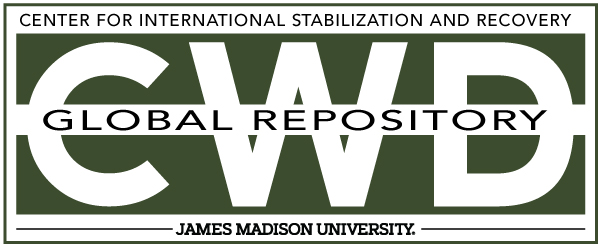Document Type
Other
Creative Commons License

This work is licensed under a Creative Commons Attribution-Noncommercial-No Derivative Works 4.0 License.
Publication Date
8-2004
Keywords
TWEIS, 2003, 5th Edition, Risk Education, Victim Assistance, ERW Clearance, Conventional Weapons Stockpile Destruction, Advocacy and International Law, Centers and Organizations, State Department, Humanitarian Mine Action, Landmine, Clearance, Victim Assistance, Risk Education, Funding, PM/WRA, MANPADS, HMA, Training, Research, Development, PSSM, CISR
Abstract
This fifth edition of To Walk the Earth in Safety contains information on specific programs and accomplishments of the U.S. Humanitarian Mine Action Program through the end of 2003. Although the United States did begin providing substantial mine action assistance to Afghanistan as early as 1988 and then to Cambodia and some other countries starting in 1991, the formal program as we know it today really began in 1993. Thus, 2003 is a milestone, marking ten uninterrupted years of genuine and signifi cant U.S. action to eradicate persistent landmines—both anti-personnel and anti-vehicle—as well as unexploded ordnance wherever they threaten civilian populations or deny them access to their land, homes, markets, schools, churches, and hospitals.
Throughout this past decade, the United States has been by far the largest humanitarian mine action donor, having contributed between one third and one half of all of the money invested worldwide on this cause. The evidence of our commitment is exhibited in this fifth report. This edition describes accomplishments and achievements in our mine action program in 40 countries and regions.
We have achieved much in the last ten years, and have registered real successes in many countries plagued by landmines, countries that experienced hundreds, and in some cases even thousands of injuries and casualties annually.
Included in
Defense and Security Studies Commons, Peace and Conflict Studies Commons, Public Policy Commons, Social Policy Commons



